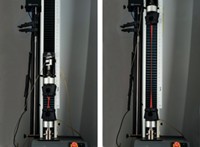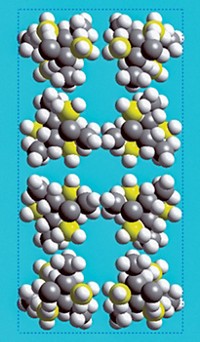Advertisement
Grab your lab coat. Let's get started
Welcome!
Welcome!
Create an account below to get 6 C&EN articles per month, receive newsletters and more - all free.
It seems this is your first time logging in online. Please enter the following information to continue.
As an ACS member you automatically get access to this site. All we need is few more details to create your reading experience.
Not you? Sign in with a different account.
Not you? Sign in with a different account.
ERROR 1
ERROR 1
ERROR 2
ERROR 2
ERROR 2
ERROR 2
ERROR 2
Password and Confirm password must match.
If you have an ACS member number, please enter it here so we can link this account to your membership. (optional)
ERROR 2
ACS values your privacy. By submitting your information, you are gaining access to C&EN and subscribing to our weekly newsletter. We use the information you provide to make your reading experience better, and we will never sell your data to third party members.
Materials
ACS Meeting News: Siloxane Polymer Achieves Record Stretchiness
by Matt Davenport
August 20, 2015

“Ultimately, this is a new class of material,” Goff said.
The polymer is soft, strong, and it rebounds to its original shape after being stretched, which makes it an attractive material for flexible electronics and medical implants, Gelest chief technology officer Barry C. Arkles told C&EN. “This material will find applications,” he said, adding that the polymer will be commercially available by year’s end.
But, judging from the volume of questions from Tuesday’s crowd, the currently mysterious molecular structure of the polymer could prove to be its most exciting feature. The researchers explained that they created the polymer by first making siloxane macromonomers with a new ring-opening polymerization reaction. Then, using a step growth polymerization, the team assembled the monomers into the ultra-stretchy new material.
The team found that increasing the molecular weight of the macromonomers improved the elasticity of the final product, which also contains silica nanoparticles for structural support.
What the team has not yet found are covalent cross-links within the polymer, which one would expect in a material so stretchy, Goff said. Based on a battery of tests, including gradient suppression NMR and gel permeation chromatography, the material appears to be a linear polymer.
“This is really, really exciting,” said Petar R. Dvornic, a professor of polymer chemistry at Pittsburgh State University who was not involved in developing the new polymer. “Linear polymers just don’t behave this way. The key thing now is to prove it’s linear.”
The team is working to better characterize the polymer with analytical methods, but computational studies will likely be needed to fully understand the material, Arkles said. “The computer modeling community is going to have a field day with this.”





Join the conversation
Contact the reporter
Submit a Letter to the Editor for publication
Engage with us on Twitter